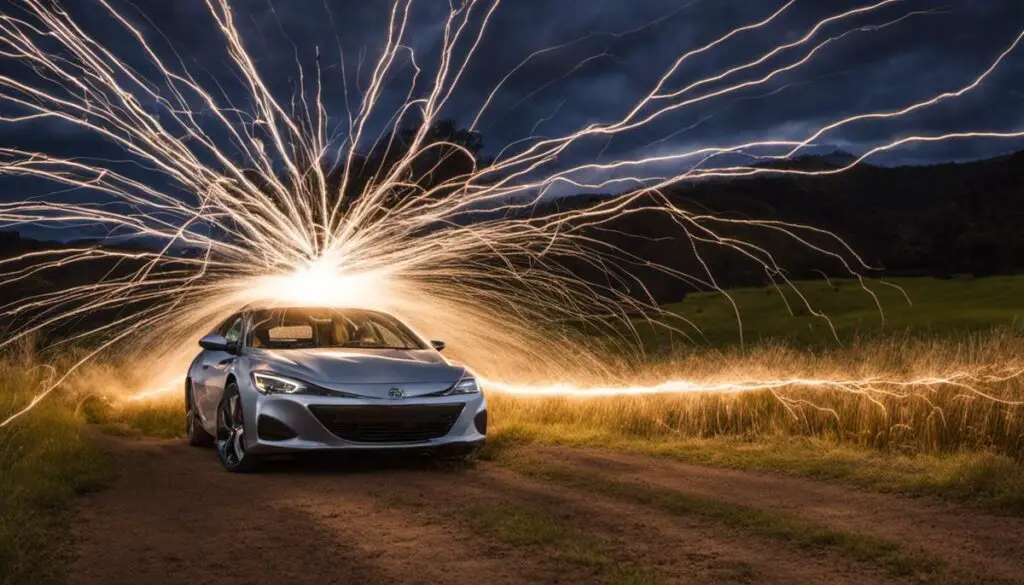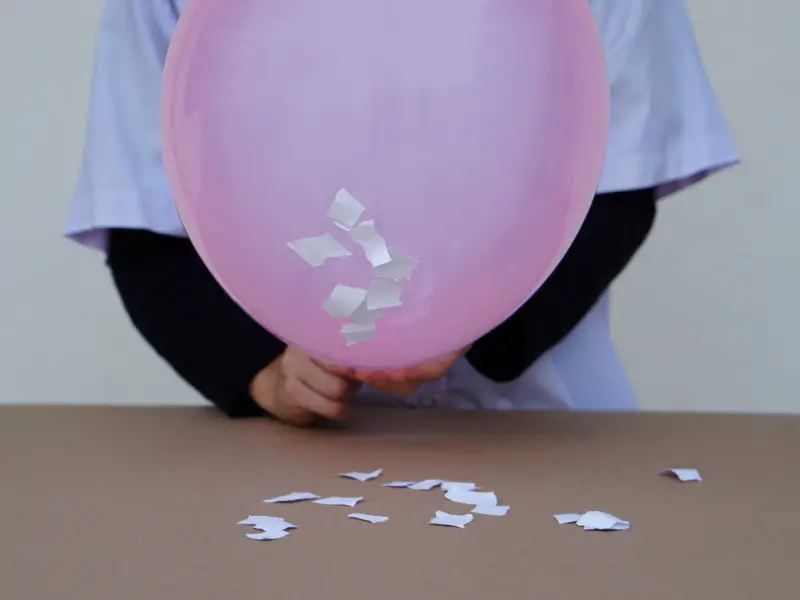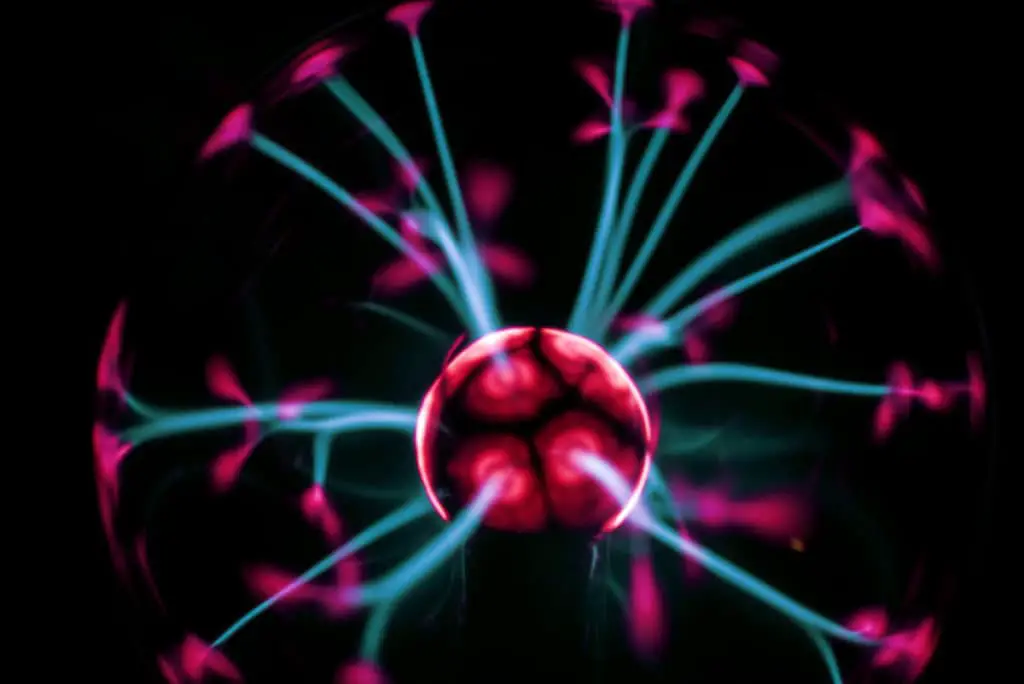This post contains affiliate links.


From the scintillating spark of a lightning bolt to the mystifying cling of a balloon to your hair, static electricity surrounds us daily. However, despite its ubiquity, it remains largely misunderstood. Allow yourself to be drawn into the dynamic world of charges and electrons, where invisible forces rule, and the unpredictability of the natural world manifests itself in the most ordinary of objects.
Static electricity can cause balloons to stick to surfaces or cling to hair and clothing due to the attraction between opposite charges. When rubbed, balloons can accumulate static charge, leading to temporary adhesion or repulsion, showcasing the intriguing interplay between electrical forces and everyday objects.
This fascinating journey into the depths of static electricity will start by breaking down its fundamental concepts. After that, you’ll be taken through an enthralling exploration of the connection between static electricity and balloons. Finally, in a grand culmination, you’ll witness static electricity in action, stepping into the practical realm with thrilling demonstrations and valuable applications.

Understanding The Basics Of Static Electricity
The world of static electricity is closely connected to how things work in science. It’s all about how tiny particles called electrons move around and share. These particles have charges, and some charges attract while others repel. This is the main idea behind how static electricity works.
One important rule is Coulomb’s Law, which helps us understand how much force is between charged particles. It was discovered a long time ago and helps understand how electricity behaves.
When certain materials rub against each other, static electricity can happen. This happens because some materials like to hold onto electrons more than others. This process is called the triboelectric effect, and it’s what makes things stick together sometimes.
Scientists also study something called quantum physics, which helps us understand even more about how static electricity works. It tells us that electrons can act like particles and waves, which is pretty cool when we think about how they make static electricity happen.
Understanding this helps scientists use static electricity in many practical ways, like making things stick together or even powering some machines. So, the more we know, the more we can do with it. It’s like solving a puzzle that helps us learn more about the world around us.


The Science Behind Balloons And Static Electricity
Balloons and static electricity go hand in hand, creating some pretty interesting effects. When you rub a balloon against your hair, the balloon gets a little bit of electric charge, which makes it stick to things like a wall. This happens because of tiny particles in the air called electrons that move around and make the balloon and the wall attract to each other.
But this isn’t all just fun and games. This interaction actually teaches us a lot about how the tiniest things in the world, like electrons, can make some really big things happen. Even the air around us can play a part, with things like humidity affecting how long the balloon will stick to the wall. It’s kind of like a little invisible dance that’s happening all the time, showing us how the world works in ways we can’t always see.


Practical Applications And Experiment Demonstrations
Static electricity can both fascinate and educate, demonstrating fundamental physical principles at play. Here, let us delve into some applications and demonstrations using ordinary balloons that vividly showcase the effects of static electricity.
Though seemingly simple, this first demonstration helps students visualize and understand the principle of attraction between charged and uncharged objects. A balloon is rubbed against wool, altering the electronic charge on its surface. The subsequent attraction observed when the balloon is brought close to neutral particles (like tiny pieces of paper) highlights the concept of charge induction. Here, electric polarization within the seemingly neutral paper pieces induces a positive charge on the side closest to the negatively charged balloon, pulling them towards it.
Another vivid demonstration is the hair-raising experiment. Here, a person rubs a balloon against their hair and then removes the balloon. This leaves their hair standing on end, due to the negative charge transferred from hair strands to the balloon, causing each hair strand to repel its neighbor. This visual spectacle clarifies the principle that like charges repel and even showcases the transfer of charge between different kinds of materials.
A balloon can also be used to probe the nature of electric force fields. Studded with small charged pieces of tape, a balloon can visually delineate the forces exerted by a larger charged object, such as a Van de Graaff generator or perhaps another charged balloon. By observing the alignment and movement of the tape pieces, students are able to build an understanding of the invisible yet ubiquitous electric forces sculpting our world.
Beyond educational settings, static electricity finds applications in diverse fields. A balloon’s propensity for static makes it perfect for an improvised electroscope, a device to detect the presence of charge. Moreover, modified versions of this principle are applied in electrophotography and xerography – the printing technology used in photocopy machines – where a toner’s ink particles are attracted towards statically charged areas to form an image.
The act of charging a balloon, bringing it close to an uncharged object, and observing the interaction uncovers the drama in the atomic world, helping us translate invisible laws into observable phenomena. While the balloon is just an accessory here, the underlying principles provide essential comprehension to the navigation of the sophisticated electronic world of today.
In conclusion, charged balloons offer more than just amusement; they serve as an irreplaceable entry into the grand theater of physical sciences, mirroring patterns woven intricately into the fabric of the universe. This discovery – made possible by a tool as simple as a balloon – reaffirms the adage that science is indeed everywhere, in everything we perceive and interact with. The realization of this humble fact ignites our willingness to remain life-long learners, spurred on by curiosity, and propelled by the wonders of everyday physics.


Static Electricity And Balloon Decorating
Static electricity can present a range of challenges for balloon decorators, affecting both the preparation and presentation of balloon arrangements. When balloons are statically charged, they tend to attract dust and small particles from the surrounding environment, which can compromise the aesthetic appeal of the display. Balloon decorators often find themselves contending with the tedious task of constantly cleaning the balloons to maintain their pristine appearance. The presence of dust and debris not only diminishes the visual appeal but can also undermine the overall professionalism of the display, necessitating meticulous maintenance before and during events.
Moreover, the accumulation of static electricity can lead to an increased likelihood of balloons popping unexpectedly. As balloons become charged, they can stick to each other or other surfaces, creating tension that makes them more susceptible to bursting upon contact. This poses a considerable challenge for decorators striving to create elaborate and intricate balloon arrangements, as the risk of damaging balloons during the assembly process looms large. Additionally, when attendees move around the venue, the friction between their clothing and the balloons can exacerbate the static charge, potentially causing balloons to burst inadvertently, thereby compromising the visual impact of the decor and requiring prompt repairs or replacements.
To mitigate the effects of static electricity, balloon decorators often employ various strategies, such as using anti-static solutions, incorporating ionizing equipment, or employing specialized treatments to reduce the build-up of static charge. By implementing these preventive measures, decorators can enhance the longevity and visual appeal of their balloon displays, ensuring a seamless and captivating experience for event attendees. Additionally, educating clients and attendees about the impact of static electricity on balloon decorations can foster a better understanding of the challenges involved and promote a collaborative effort in maintaining the integrity of the display throughout the event.
How Do You Make Balloons Less Static?
To reduce balloon static, use anti-static solutions (such as dryer sheets or static guard), humidify the environment, or employ ionizing equipment, mitigating the accumulation of electrical charge and minimizing the attraction of dust and debris.
If you are using the DIY balloon bags from my post, The Best Way To Transport Inflated Balloons, you can use dryer sheets when you dry the balloon bags, which will help reduce the static or for a quick and instant reduction in static, try Static Guard.


After having witnessed the captivating interplay between balloons and static electricity, its intriguing forces, and the magical transfers of charge, one can truly appreciate the complex yet exciting realm of static electricity. Not only does it underpin many interesting phenomena we see around us, but it also has significant practical implications, enriching our lives in various ways.
From igniting a child’s curiosity from simple balloon tricks to unlocking deeper scientific queries through advanced demonstrations, static electricity proves its worth as an exciting field of study. The quest to understand static electricity and its myriad interactions is a journey, one that continues to unfurl new secrets even as we delve deeper into the invisible world of charges and electrons.
I hope this post brought value to your day. If it did, please consider sharing it with a friend or on your favorite social media. Thanks For Reading Fun With Balloons!

